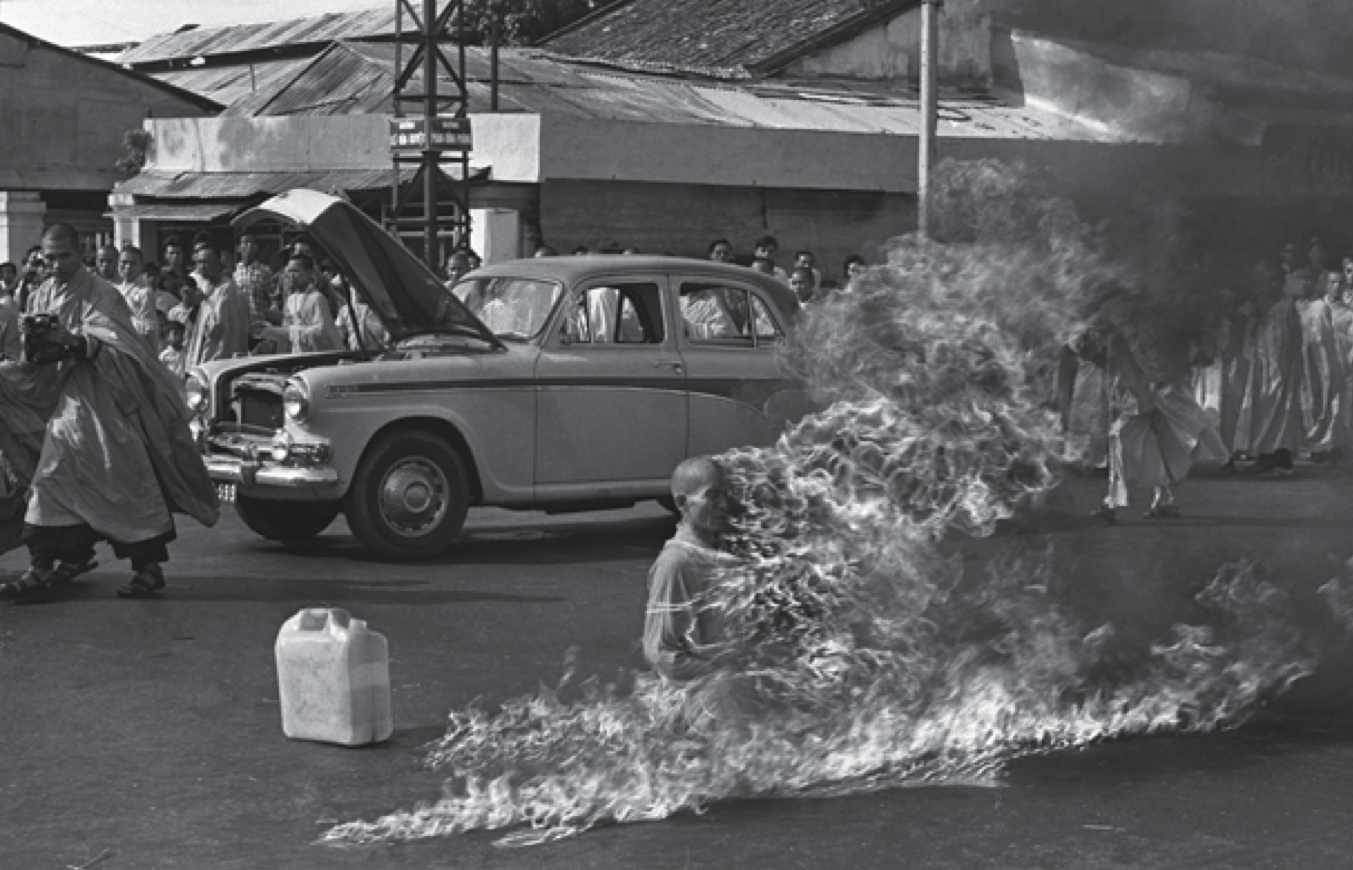Self-inflicted suffering as protest
 My interest in self-inflicted
suffering began with an invitation to contribute a chapter
on self-immolation—people who kill themselves as an act of protest,
without harming others—to Making
Sense of Suicide Missions (ed. Diego
Gambetta, Oxford University Press, 2006). For this I compiled
comparable data on over five hundred individual acts, from all over the
world, during the last four decades. This provides evidence to extend
my analysis of diffusion processes, to examine not only how acts of
self-immolation have clustered in waves, but also how this particular
technique of protest spread from its origin in Vietnam. This process is examined in
'How Repertoires Evolve: The Diffusion of Suicide Protest in the Twentieth Century'
(Mobilization, 2013).
My interest in self-inflicted
suffering began with an invitation to contribute a chapter
on self-immolation—people who kill themselves as an act of protest,
without harming others—to Making
Sense of Suicide Missions (ed. Diego
Gambetta, Oxford University Press, 2006). For this I compiled
comparable data on over five hundred individual acts, from all over the
world, during the last four decades. This provides evidence to extend
my analysis of diffusion processes, to examine not only how acts of
self-immolation have clustered in waves, but also how this particular
technique of protest spread from its origin in Vietnam. This process is examined in
'How Repertoires Evolve: The Diffusion of Suicide Protest in the Twentieth Century'
(Mobilization, 2013).
Research on self-immolation poses a new theoretical puzzle: why do protesters inflict costs on themselves? That defies the logic of bargaining, exemplified by strikes and sit-ins, which is to inflict costs on recalcitrant opponents. This paradoxical phenomenon—what I call 'communicative suffering'—has escaped the attention of scholars of social movements. When Costs Are Benefits (under review) explains why it can be rational to seek arrest, welcome police brutality, march long distances, and even kill oneself. I argue that suffering can become a source of power by signalling commitment or deprivation, by evoking anger or guilt, or by creating what I call 'second-order injustice.'
To investigate this further, I have embarked on a new research project on hunger strikes in Britain and Ireland in the early twentieth century ...
Michael Biggs, Department of Sociology, University of Oxford